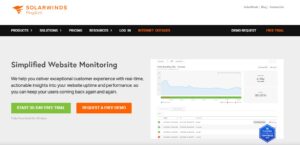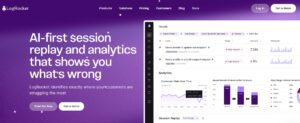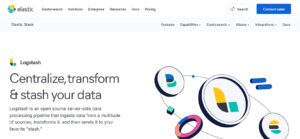KubeSense markets itself as a next-gen observability platform with APM, log analytics, and AI-driven error detection, built on a Kubernetes-first and eBPF-based approach. While strong in cloud-native monitoring, teams are seeking alternatives due to rising ingestion-based costs, unclear RUM and synthetic support, and compliance concerns with its SaaS model.
CubeAPM is the best alternative to KubeSense. It is OpenTelemetry-native, covers the full MELT stack, and has an extensive ecosystem of integrations (800+ integrations). Its smart sampling lowers costs by up to 70% while keeping critical traces, and with transparent pricing of $0.15/GB, it delivers predictable and enterprise-ready observability.
In this article, we’ll explore the top KubeSense alternatives, comparing their features, pricing, and reviews, to help you find the best APM solution.
Table of Contents
ToggleTop 7 Alternatives To KubeSense
- CubeAPM
- Datadog
- New Relic
- Dynatrace
- SigNoz
- AppSignal
- Coralogix
Why Look for KubeSense Alternatives?
1. Escalating Costs with Ingestion Pricing
KubeSense Cloud follows a $0.20–$0.25/GB ingestion model. For organizations generating 10TB of telemetry monthly, bills can easily surpass $5,000, which puts it in the same cost bracket as Datadog and New Relic. This quickly becomes unsustainable at enterprise scale.
For example, for a midsized company ingesting 10TB of telemetry a month, KubeSense’s Basic Cloud plan at $0.25/GB would cost around $2,399/month (including the base fee), but with only 15-day log retention and 1-month metrics retention, making it expensive for limited data durability. Companies needing longer retention are forced into higher tiers or Enterprise contracts, where costs quickly rise beyond $5K/month
2. Unclear RUM and Synthetic Monitoring
Although KubeSense markets itself as a full-stack observability platform, it lacks clear documentation or dedicated modules for real user monitoring (RUM) and synthetic checks. This limits visibility into frontend performance and user experience compared to more mature competitors.
3. AI-driven Features Still Maturing
The “AgentSRE” engine for anomaly detection and RCA (root cause analysis) is innovative but early-stage. Competing AIOps solutions like Dynatrace Davis AI or Splunk ITSI are more mature, offering deeper automation and proven reliability at scale.
4. Learning Curve & Operational Overhead
Teams report that while the platform integrates deeply with Kubernetes, configuring eBPF-based instrumentation and tuning anomaly detection rules requires expertise. For smaller DevOps teams, this can create a steep onboarding curve compared to plug-and-play APM tools.
5. Support Responsiveness Concerns
Lower-tier KubeSense plans are restricted to email support with longer turnaround times. Slack and on-call support are only available at higher tiers, meaning smaller teams may struggle with delayed resolutions for production incidents.
Criteria for Suggesting KubeSense Alternatives
Pricing Transparency & Total Cost of Ownership (TCO)
A sustainable observability platform should have simple, predictable pricing. Tools like CubeAPM provide flat per-GB or per-node models without hidden charges, helping teams save 60–70% compared to ingestion-heavy vendors.
2. OpenTelemetry-Native Support
With OpenTelemetry becoming the industry standard, the best alternatives must natively support OTEL to prevent vendor lock-in and ensure compatibility across metrics, logs, traces, and events.
3. Deployment Flexibility
Compliance-conscious organizations need deployment options — from cloud SaaS for speed, to on-prem/BYOC for full data residency and localization control.
4. Smart Sampling & Data Efficiency
Instead of brute-force ingestion, alternatives should use intelligent sampling to capture critical traces tied to errors or latency spikes. This keeps costs down while preserving the data that matters most.
5. Full MELT Coverage
Modern observability requires a unified view across Metrics, Events, Logs, and Traces (MELT). Alternatives must provide deep coverage across all four pillars, not just APM or logs in isolation.
6. Responsive Support & Community
Rapid issue resolution is critical for SRE and DevOps teams. Alternatives should offer multi-channel support (Slack, on-call, knowledge base) with short response times, ensuring production reliability.
KubeSense Overview

Known for (Primary Use Case)
KubeSense is a Kubernetes-first observability platform offering APM, log management, and infrastructure monitoring with eBPF-based, agentless data capture. It is primarily known for reducing monitoring overhead in cloud-native environments.
Standout Features
- AI-driven SRE (AgentSRE) with anomaly detection and RCA.
- eBPF kernel-level telemetry for lightweight data capture.
- Unified MELT observability (metrics, events, logs, traces).
Key Features
- Application Performance Monitoring (APM)
- Log Management
- Infrastructure Monitoring
- Trace Explorer and protocol visibility
- AI-based alerting and anomaly detection
Pros
- Unified platform covering multiple telemetry types.
- Efficient instrumentation through eBPF.
- AI-enhanced troubleshooting for faster RCA.
Cons
- Ambiguous support for RUM and synthetic monitoring.
- Dual pricing models (BYOC vs ingestion) can confuse cost forecasting.
- Limited retention on lower-tier Cloud plans (15 days for logs/traces/events, 1 month for metrics).
Best For
Teams running Kubernetes-heavy workloads that want unified observability and AI-driven incident response without heavy instrumentation.
Pricing & Customer Reviews
- Pricing:
- Basic – $0.25/GB ingested
- Standard – $0.20/GB ingested
- Premium – $0.20/GB ingested
- Enterprise – Custom – custom data volumes
- Reviews: Still early-stage—no aggregated G2 or Gartner ratings yet, but positioning appeals to mid-market DevOps teams exploring alternatives to Datadog or New Relic.
Top 7 KubeSense Alternatives
1. CubeAPM

Known for
OpenTelemetry-native observability platform built for cost efficiency, compliance, and simplicity, covering full-stack MELT with SaaS and on-prem deployment options.
Key Features
- Application Performance Monitoring (APM) with distributed tracing.
- Log management with real-time search and analytics.
- Infrastructure monitoring across Kubernetes, VMs, and hybrid clouds.
- Real User Monitoring (RUM) and synthetic monitoring for frontend coverage.
- Error tracking integrated with traces for faster RCA.
Standout Features
- Smart Sampling that retains traces tied to errors and latency spikes while filtering out noise — lowering costs by up to 70%.
- Flexible deployment options: SaaS or on-prem with strict compliance support.
- Transparent pricing: $0.15/GB ingestion
Pros
- Up to 60–70% cheaper than Datadog and New Relic.
- Compliance-ready with on-prem option.
- Quick, developer-friendly onboarding.
Cons
- Not suited for teams looking for off-prem solutions
- Strictly an observability platform and does not support cloud security management
Best For
Mid-sized and large teams seeking predictable pricing, OTEL-native observability, and compliance-friendly hosting.
Pricing & Customer Reviews
- Pricing: $0.15/GB for data ingestion
- Reviews: Red at 4.7/5(Based on end-user feedback from Slack)
CubeAPM vs KubeSense
Compared to KubeSense’s dual pricing models and short data retention, CubeAPM provides simpler pricing, longer retention, and smart sampling, making it more cost-efficient and enterprise-ready.
2. Datadog

Known for
Datadog is a market-leading observability and monitoring platform, widely adopted for its breadth of features, strong ecosystem integrations, and support for both cloud and hybrid environments.
Key Features
- Application Performance Monitoring (APM) with distributed tracing.
- Real User Monitoring (RUM) and synthetic monitoring.
- Log management and analytics.
- Infrastructure and container monitoring.
- Security monitoring and compliance features.
- Dashboards, alerting, and advanced visualization.
Standout Features
- Extensive ecosystem with hundreds of integrations across cloud, databases, and applications.
- Comprehensive frontend coverage with RUM and synthetics.
- Mature, enterprise-ready features across MELT observability.
Pros
- Rich, full-stack monitoring capabilities.
- Strong ecosystem support and integrations.
- Good frontend visibility with RUM and synthetic tools.
Cons
- High costs that scale sharply with data volumes.
- Complex billing across modules, often leading to surprise bills.
- Limited transparency in pricing, making TCO difficult to forecast.
Best For
Enterprises needing a feature-rich, mature observability platform with wide integration support and advanced frontend monitoring, and who can handle complex billing structures.
Pricing & Customer Reviews
- Pricing:
- APM: starts at $31/host/month
- Logs – Effective Cost: $0.1/GB + $1.7/M events (15d), synthetics billed separately;
- Infra Cost: starting at $15/host/month
- Reviews: Rated around 4.4/5 on G2. Praised for feature depth, but customers frequently mention cost overruns and billing complexity.
Datadog vs KubeSense
While Datadog is more mature and feature-complete, especially with RUM and synthetics, it is far more expensive and complex to manage. KubeSense may be simpler and cheaper at small scale, but Datadog offers broader enterprise capabilities.
3. New Relic

Known for
New Relic is one of the oldest and most widely recognized APM platforms, best known for its application-centric monitoring and frontend observability through RUM and synthetic monitoring.
Key Features
- Application Performance Monitoring (APM) with distributed tracing.
- Log management and analytics.
- Real User Monitoring (RUM) and browser monitoring.
- Synthetic monitoring for pre-production checks.
- Infrastructure monitoring across servers, containers, and cloud.
- Error tracking and alerting with integrated dashboards.
Standout Features
- Strong frontend visibility through RUM and synthetic monitoring.
- Mature ecosystem with deep integrations across cloud and application stacks.
- Longstanding reputation in APM with developer-friendly tooling.
Pros
- Comprehensive application and frontend monitoring.
- Mature, feature-rich product with proven reliability.
- Strong documentation and integration ecosystem.
Cons
- High pricing: $0.35/GB for data ingestion plus $400 per user/month for full platform access.
- Data retention beyond default limits requires extra payment.
- All data stored in New Relic’s cloud, creating compliance challenges for localization.
Best For
Large enterprises and SaaS providers needing mature application and frontend monitoring, with budgets to support high recurring licensing costs.
Pricing & Customer Reviews
- Pricing:
- Free Plan: 100GB/month of data ingestes
- Paid Plan: $0.35/GB for data ingestion and $400/user/month for full access. Costs can reach tens of thousands monthly for data-heavy teams.
- Reviews: Around 4.4/5 on G2. Users value the depth of application monitoring but often complain about high pricing and licensing complexity.
New Relic vs KubeSense
New Relic is more mature and frontend-focused than KubeSense, offering stronger RUM and synthetics. However, its pricing is significantly higher, making KubeSense appear cost-friendlier at lower data scales, though less feature-rich.
4. Dynatrace
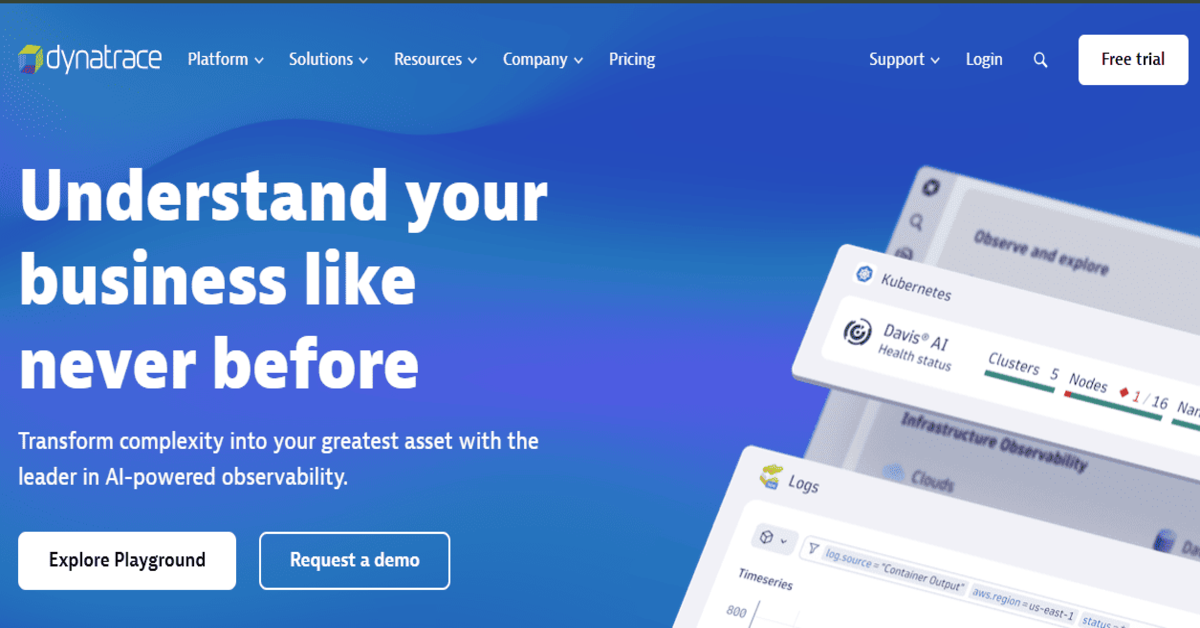
Known for
Dynatrace is an enterprise-grade observability and AIOps platform, recognized for its Davis AI engine, which delivers automated root cause analysis and predictive insights across large-scale, hybrid, and multi-cloud environments.
Key Features
- Application Performance Monitoring (APM) with distributed tracing.
- Infrastructure and cloud monitoring with topology mapping.
- Log management and analytics.
- Real User Monitoring (RUM) and digital experience monitoring.
- Synthetic monitoring for proactive performance checks.
- Security monitoring and application vulnerability detection.
Standout Features
- Davis AI for anomaly detection, RCA, and predictive analytics.
- Automatic dependency mapping across applications, microservices, and infrastructure.
- Enterprise scalability with built-in automation for large distributed systems.
Pros
- Highly automated, reducing manual investigation time.
- Comprehensive coverage of MELT and security monitoring.
- Strong support for enterprise-scale hybrid and multi-cloud environments.
Cons
- High licensing costs compared to smaller vendors.
- Complex to set up and manage for mid-sized teams.
- Steeper learning curve due to the platform’s depth.
Best For
Large enterprises with complex architectures that need AI-driven automation, predictive insights, and scalability across thousands of services.
Pricing & Customer Reviews
- Pricing
- Full-Stack Monitoring: $0.08 per hour for 8 GiB host
- Infrastructure Monitoring: $0.04 per hour for any size host
- Kubernetes Platform Monitoring: $0.002 per hour for any size pod
- Application Security: $0.018 per hour for 8 GiB host
- Real User Monitoring: $0.00225 per session
- Synthetic Monitoring: $0.001 per synthetic request
- Reviews: Around 4.5/5 on G2. Customers highlight powerful AI-driven insights but note complexity and cost as key drawbacks.
Dynatrace vs KubeSense
Dynatrace offers deeper automation and AI capabilities compared to KubeSense, making it better suited for enterprises. However, KubeSense may be simpler and more cost-effective for smaller Kubernetes-focused teams.
5. SigNoz
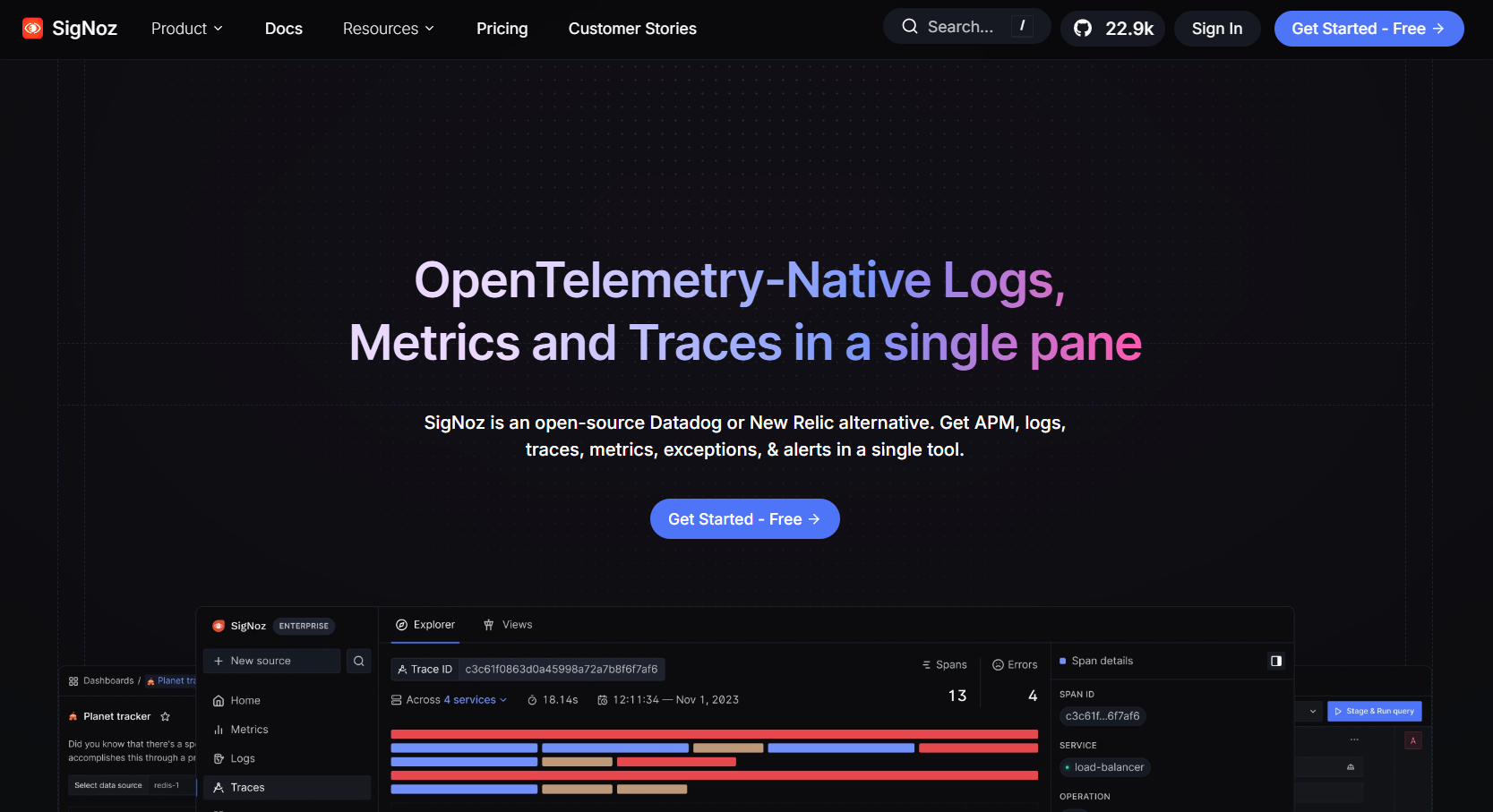
Known for
SigNoz is an open-source observability platform built on OpenTelemetry, known as a popular alternative to proprietary APMs for teams wanting transparency, self-hosting, and cost control.
Key Features
- Application Performance Monitoring (APM) with distributed tracing.
- Log management with ClickHouse-based storage.
- Metrics monitoring with Prometheus-style queries.
- Dashboards and visualization with Grafana-like flexibility.
- Error tracking integrated with traces for faster RCA.
Standout Features
- Open-source and OTEL-native, ensuring no vendor lock-in.
- Self-hosted option for full control and compliance.
- Affordable cloud offering with flexible pricing for startups and SMBs.
Pros
- Free to self-host with strong community support.
- Transparent, predictable pricing for SaaS.
- Strong adoption among developers moving toward OTEL.
Cons
- Fewer enterprise-grade features compared to Dynatrace or New Relic.
- Limited advanced RUM and synthetic monitoring.
- Smaller ecosystem of integrations versus incumbents.
Best For
Startups, SMBs, and developer-led teams that want low-cost, open-source observability with self-hosted or hybrid options.
Pricing & Customer Reviews
- Pricing:
- Free for open-source self-hosted
- Free tier + base fee of $49/month. Charges beyond the base fee are based on data ingested:
- Traces: $0.30/GB.
- Logs: $0.30/GB.
- Metrics: $0.10/million samples.
- Reviews: Rated around 4.6/5 on G2. Praised for simplicity, cost efficiency, and strong developer community, though some users note feature gaps at enterprise scale.
SigNoz vs KubeSense
SigNoz provides greater transparency and lower cost than KubeSense, especially for teams that can self-host. KubeSense may offer stronger AI-driven features, but SigNoz is ideal for teams prioritizing open-source flexibility and cost savings.
6. AppSignal

Known for
AppSignal is known as a developer-friendly APM tool tailored for smaller engineering teams, especially popular among Ruby, Elixir, Node.js, and Python applications. It emphasizes simplicity, ease of setup, and actionable insights without enterprise-level complexity.
Key Features
- Application Performance Monitoring (APM) with distributed tracing.
- Error tracking with context-rich reports.
- Host and infrastructure monitoring.
- Dashboards and custom metrics.
- Built-in anomaly detection and alerting.
Standout Features
- Extremely easy to set up and use, with auto-instrumentation for supported languages.
- All-in-one pricing model with no separate add-ons.
- Strong focus on developer experience with a lightweight UI.
Pros
- Simple and intuitive setup.
- Affordable and transparent pricing.
- Excellent for language-specific ecosystems like Ruby and Elixir.
Cons
- Limited support for large-scale, polyglot enterprise environments.
- Narrower ecosystem compared to Datadog, Dynatrace, or CubeAPM.
- Less advanced RUM, synthetics, and compliance features.
Best For
Small to mid-sized developer teams seeking an affordable, plug-and-play APM for supported languages without needing enterprise complexity.
Pricing & Customer Reviews
- Pricing
- APM $ 25 for 250K requests/month
- Logging free for first 1GB/month Enterprise SAML SSO ($ 599 per month)
- Long-term log storage ($ 99 per month)
- HIPAA Compliance ($ 99 per month)
- Reviews: Around 4.6/5 on G2. Praised for ease of use and developer-first design, though some note it lacks advanced enterprise observability features.
AppSignal vs KubeSense
Compared to KubeSense, AppSignal is simpler, cheaper, and more developer-focused, making it a strong fit for small teams. However, KubeSense provides broader MELT coverage and AI-driven SRE features better suited for larger enterprises.
7. Coralogix

Known for
Coralogix is best known for log analytics and cost-optimized data retention, leveraging its unique log lifecycle management to reduce storage costs while maintaining observability depth.
Key Features
- Application Performance Monitoring (APM) and distributed tracing.
- Advanced log management with pipeline processing.
- Real User Monitoring (RUM) and session replay.
- Metrics and infrastructure monitoring.
- SIEM and compliance features for security observability.
Standout Features
- Log Lifecycle: Hot, warm, and cold storage tiers with the option to archive data directly into the customer’s own cloud storage at minimal cost.
- AI-powered insights for anomaly detection and pattern recognition.
- Strong frontend monitoring with RUM, replay, and core web vitals.
Pros
- Lower long-term storage costs through customer-owned archival.
- Broad observability stack covering MELT and security.
- Mature platform with strong frontend observability capabilities.
Cons
- Egress costs: Data first goes into Coralogix, then back out to customer storage, creating public cloud transfer fees.
- Compliance concerns: Since data leaves its origin once, it may conflict with strict localization rules.
- Can be complex to configure compared to simpler tools.
Best For
Organizations with high log volumes seeking to cut storage costs while maintaining full observability, especially those with their own cloud infrastructure.
Pricing & Customer Reviews
- Pricing
- Logs: $0.52/GB, infinite retention
- Traces: $0.44/GB, infinite retention
- Metrics:$0.05/GB, infinite retention
- AI: 1.5 per 1M tokens
- Reviews: Rated around 4.6/5 on G2. Praised for log analytics power and cost optimization, but some users report hidden complexity with data pipelines and compliance concerns.
Coralogix vs KubeSense
Compared to KubeSense, Coralogix offers more flexible log retention and stronger RUM support, but introduces egress and compliance trade-offs. KubeSense may be easier to adopt, while Coralogix shines for log-heavy teams optimizing storage costs.
Conclusion
KubeSense delivers strong Kubernetes-focused observability with eBPF and AI-driven features, but its dual pricing, short retention, and limited RUM/synthetic support push many teams to seek alternatives. Enterprise tools like Datadog, New Relic, and Dynatrace offer depth but at high cost, while Coralogix, SigNoz, and AppSignal target specific needs. CubeAPM stands out as the most balanced option, combining full MELT coverage, transparent pricing, smart sampling, and flexible deployment for predictable, enterprise-ready observability.

